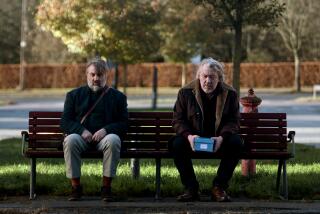The many deaths of Bruce Wayne’s parents, ranked
The melodramatic offing of the Wayne family is, understandably, the mental springboard that launches baby Bruce Wayne into his vigilantism career as Batman. It’s the cornerstone of the unraveling of the mind of the millionaire and the physical representation of the corruption and injustice in Gotham that Batman must fight.
But sweet bat-pajamas, the Waynes have died more than a dozen times on film and television, twice already by director Zack Snyder (once in the recent “Batman v Superman” movie, and there was a Wayne death homage in his “Watchman” titles). And sadly they can’t all be Will Arnett’s blustery Batman song from “The LEGO Movie,” with the touching lyrics “Darkness! No parents!”
The scene plays out (almost) always the same since their fate was first depicted in a 1939 issue of “Detective Comics.” Just insert the appropriate symbolic prop (happy family, gun, “Mark of Zorro” marquee, Mrs. Wayne’s pearls) at the appropriate time and presto, your superhero is now saddled with emotional baggage.
So who did the Wayne family justice? Here’s our collection of the Wayne family’s on screen demise, ranked.
12. Batman: Arkham Asylum (2009)
Phantasmagoric visions swirl through video game “Batman: Arkham Asylum” as a drugged Batman stumbles across a CG version of his parents’ demise. Some moments are spectacular. Others are not, including the slow stroll through Gotham’s alleys in which disembodied voices recall Tom and Martha’s murder. In a nice touch, Martha’s dialogue questions the cocksure shortcut that ends their life. Forcing players to stare at Batman’s back as he staggers toward a barely seen crime is less inspired.
11. Batman v Superman: Dawn of Justice (2016)
Zack Snyder kills the Wayne elders in the opening of “Batman v Superman” because how would we understand the Dark Knight’s fear and hatred of criminals without a reminder of his youth? In keeping with the steroid-amped tone of the film, this Thomas Wayne (played by Jeffrey Dean Morgan, a.k.a. the Comedian in Snyder’s “Watchmen”) aggressively tries to stop the mugging -- it doesn’t work.
The “gun and pearls” imagery Frank Miller first introduced in the 1986 comic collection “The Dark Knight Returns” is recycled again. The string of pearls worn by Martha Wayne (played by Lauren Cohan of “The Walking Dead”) snap after being implausibly draped across the gun of the attacking criminal. The falling pearls get more screentime than Martha. Overwrought dramatics, thy name is “Batman v Superman.”
10. Batman: The Brave and the Bold -- “Chill of the Night,” 2010)
This chilly blue flashback is a wobbly stack of basic building blocks. An exaggerated score and Bruce’s tears do most of the heavy lifting as the Waynes’ exit “The Mark of Zorro” (another Wayne death staple). Voicing Thomas, Adam West sounds like he’s hopped up in the vocal booth, delivering theatrical line readings with the air of a man who has never even heard the word “danger.” It was an out-of-place moment for “Batman: The Brave and the Bold,” a usually jovial translation of the Bat-verse.
9. Gotham (2014)
The “Gotham” pilot features a better family dynamic than most filmed versions of the Waynes’ final minutes and even a decent staging of the action ... right up to the point where a masked Joe Chill shoots Thomas Wayne for no reason at all.
Alas it misses the mark with amped-up acting, Bruce’s final Darth Vader-worthy shriek, and for setting the encounter under the watchful eye of a young Catwoman hunched in the fire escape. Because Gotham is tiny.
8. Batman: Year One (2011)
Despite refining the “Brave and the Bold” scene, this black-and-white retelling fails to channel the raw elegance of David Mazzuchelli’s original “Year One” comic-book artwork. The action is static, with Bruce stuck in near-immobility as his parents are knocked well off their feet by gunshots. A nice touch: pearls from Martha’s broken necklace fall like tears before Bruce’s face.
7. The Super Powers Team: Galactic Guardians -- “The Fear,” 1985)
Fun fact, the first televised version of the Waynes’ death actually premiered on a kid’s show. Bruce’s parents were first murdered on screen in the final season of a Saturday morning cartoon staple formerly called “Super Friends.”
In a flashback sequence, Batman recalls his doomed trip down “crime alley.” That surprisingly enough wasn’t called crime alley until after the Waynes decided to take the perilous shortcut. In the G-rated version, the audience never views or hears a gun, but the Waynes still meet their awful fate by a man who attacks them stating, “This is a stickup!” For a cheaply animated ‘80s relic, the episode works quite well.
6. The Dark Knight Returns (2012)
Essentially a third-generation remake of the rendition in “Brave and the Bold” and “Year One,” this is the best-produced and most-effective Miller-inspired animation, its impact derived from a faithful import not only of the writer/artist’s designs but through the pacing. Cutting the flashback against televised reports of crime and violence as an aged Bruce seriously freaks out -- as in the first issue of “The Dark Knight Returns” -- hammers home the fear-based relationship between the crime and his decision to take up crime-fighting.

5. Batman: Gotham Knight -- “Deadshot” (2008)
This anime anthology views the Wayne family through the barrel of a pistol. Think James Bond’s opening, only instead of setting up a deadly spy, it emotionally scars a small child forever.
Found in the “Deadshot” chapter of the anime series, this short is entirely concerned with Batman’s relationship to firearms. The Dark Knight recalls his family’s murder in an economical flashback delivered in four brief but vivid shots. Writer Alan Burnett (who also wrote “The Fear”) has unerring aim as he illustrates Batman’s understanding and rejection of the gun. An important moral touchstone for the character that will later be abandoned in “Batman v Superman” when the Batmobile is loaded with machine guns.
4. Batman (1989)
Tim Burton goes full noir on Bruce Wayne’s formative night. An atmosphere of urban malaise billows across the filthy Gotham streets as two muggers assail the family. Burton (and his writers) shrink Batman’s world by setting one thug as Jack Napier, the villain who would eventually become the Joker (played by Jack Nicholson).
That concept spawned a screenwriting trend that would narrow many a comic book film to a string of strange coincidences. Here, the novelty of the concept is enough to allow it to pass. Plus Burton gets points for shoehorning in the fantastically cheesy Joker line (that would later be his tell to an older Michael Keaton Batman), “You ever dance with the devil in the pale moonlight?”

3. Batman: Arkham Origins (2013)
This is the first time a bat-vehicle gives the audience a little credit and refuses to overexplain the Wayne family scene. True, it’s a commercial for a video game, but it still worked.
A tight shot on Bruce’s face keeps the aging billionaire front and center. Starting with an implied gun blast, we can only see little Bruce in the frame, cut from the shot are the Wayne elders. The closeup of Bruce’s face changes from horrified boy to an increasingly intense and angry man, slowly Batman emerges. It lacks nuance but packs an emotional wallop thanks to the instincts of designers and animators at Blur Studio, led by “Deadpool” director Tim Miller.
2. Batman: The Animated Series -- “Dreams in Darkness,” (1992)
Crime Alley becomes a pop-art expressionist vision in an outstanding animated nightmare. Caught in the Scarecrow’s plan to poison Gotham’s water supply -- a plot that prefigures director Christopher Nolan’s beloved, “Batman Begins” -- the Caped Crusader snorts a lungful of terror gas. Confined to Arkham, Bruce endures a hallucination of Martha and Thomas strolling into a tunnel. That structure becomes the blood-filled barrel of a pistol that soon fires horror full bore into Batman’s face. No other visualization of the memory even comes close.
1. Batman Begins (2005)
Nolan nails it. In his first Batman story, the director classes up the scene by swapping opera for movie theater. Nolan and cowriter David Goyer envision Thomas Wayne as an invested parent attentive to his surroundings and brave enough to face danger head-on. Nolan uses young Bruce’s fears, established in prior scenes and triggered by the opera, to motivate the family’s late-night walk.
The Waynes weren’t merely wandering the alleys of Gotham, baby Bruce was scared so they left the theater to avoid a scene and calm their son. Excellent fodder for an older Batman who will blame their deaths on his inability to cope with his fear.
More to Read
The biggest entertainment stories
Get our big stories about Hollywood, film, television, music, arts, culture and more right in your inbox as soon as they publish.
You may occasionally receive promotional content from the Los Angeles Times.






